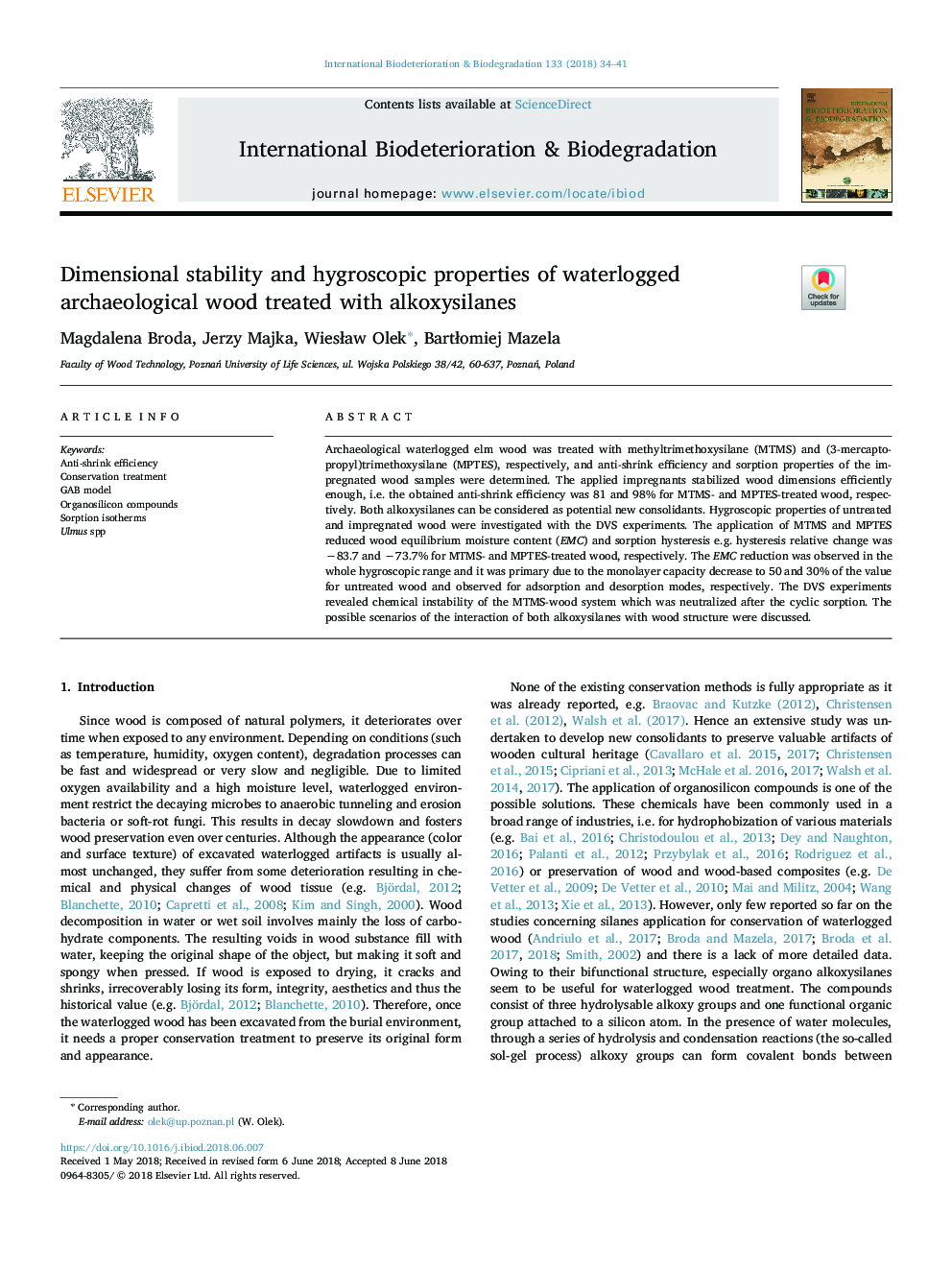| Article ID | Journal | Published Year | Pages | File Type |
|---|---|---|---|---|
| 8843676 | International Biodeterioration & Biodegradation | 2018 | 8 Pages |
Abstract
Archaeological waterlogged elm wood was treated with methyltrimethoxysilane (MTMS) and (3-mercaptopropyl)trimethoxysilane (MPTES), respectively, and anti-shrink efficiency and sorption properties of the impregnated wood samples were determined. The applied impregnants stabilized wood dimensions efficiently enough, i.e. the obtained anti-shrink efficiency was 81 and 98% for MTMS- and MPTES-treated wood, respectively. Both alkoxysilanes can be considered as potential new consolidants. Hygroscopic properties of untreated and impregnated wood were investigated with the DVS experiments. The application of MTMS and MPTES reduced wood equilibrium moisture content (EMC) and sorption hysteresis e.g. hysteresis relative change was â83.7 and â73.7% for MTMS- and MPTES-treated wood, respectively. The EMC reduction was observed in the whole hygroscopic range and it was primary due to the monolayer capacity decrease to 50 and 30% of the value for untreated wood and observed for adsorption and desorption modes, respectively. The DVS experiments revealed chemical instability of the MTMS-wood system which was neutralized after the cyclic sorption. The possible scenarios of the interaction of both alkoxysilanes with wood structure were discussed.
Related Topics
Life Sciences
Environmental Science
Environmental Science (General)
Authors
Magdalena Broda, Jerzy Majka, WiesÅaw Olek, BartÅomiej Mazela,
